Manual Standing Positioner/ Prone Standing
Manual Standing Positioner/ Prone Standing Specification
- Technology
- Wall mounting manual standing positioner / Prone Standing
- Wall Mounted
- The device is not wall-mounted, but rather a portable, free-standing unit. It can be used for various standing positions, such as prone standing (leaning forward).
- Application
- The product shown is a Standing Positioner. It is often used with an activity tray, as seen in the image. Its application is to assist individuals, particularly children with severe handicaps, in maintaining a standing position. The device can be adjusted for various standing positions, including prone, supine, or vertical, to support different activities. This type of equipment is used in occupational therapy and physiotherapy for rehabilitation.
- Function
- This device provides support for the chest, knees, and feet, allowing a person to be in an upright or prone (face down) standing position.
- Portable
- The presence of wheels on the frame makes the device portable, allowing it to be moved easily.
- Operation Mode
- Manual
- Shape
- rectangular
- Material
- The standing positioner shown in the image is typically made of mild steel for the frame, with a wooden activity tray. Frame: The metal frame is often constructed from heavy-duty mild steel square pipes and finished with a powder coating to provide durability and a clean appearance.Activity Tray: The detachable tray is usually made of wood with a natural polish finish.
- Suitable For Use
- The product shown in the image is a standing positioner, also known as a standing frame. It is a piece of medical or physiotherapy equipment designed to help people, including children with severe physical disabilities, maintain a standing position for various activities. Function: This device provides support for the body to enable standing, which can help prevent muscle atrophy, improve circulation, and lessen muscle spasms. Features: The specific model in the image appears to be a "three-in-one" stander, which can provide prone, supine, or vertical standing positions. It includes an adjustable activity tray and padded supports for the chest and knees. Usage: It is used for physiotherapy and rehabilitation to assist in standing exercises and activities.
- Storage Instructions
- Based on the image, the product is a standing positioner with an activity tray. The provided information does not contain specific storage instructions for this exact model. However, user manuals for similar standing positioners offer general guidance for product usage and maintenance.
- Dimension (L*W*H)
- 100 x 70 X 120 Millimeter (mm)
- Adhesive Type
- The product shown in the image is a standing positioner. It is a piece of physiotherapy equipment used to help individuals, often children with physical disabilities, maintain a standing position for therapeutic benefits and activities. The product does not have an "adhesive type" as it is a piece of equipment and not an adhesive.
- Attributes
- The product shown is a standing positioner, also known as a standing frame or standing aid. It is designed to help individuals, often children with disabilities, maintain a standing position.Key attributes of this type of product include:Product Name: Standing Positioner, Standing Frame, or Standing Aid. Purpose: Enables prone, supine, or vertical standing for therapeutic and daily activities. Components:Frame: Typically made of mild steel or iron tubes. Supports: Features padded supports for the chest, pelvis, knees, and ankles to provide stability and proper alignment. Adjustability: Supports are often adjustable in height and width to accommodate different user sizes. Mobility: Equipped with wheels for easy movement. Accessories: Includes an adjustable activity tray for holding objects or for use during activities.
- Feature
- It includes an activity tray and supports for the knees and chest that can be adjusted.
- Use
- The product shown in the image is a Standing Positioner or Standing Frame. It is a piece of medical equipment used to help individuals, often children with physical disabilities, maintain a standing position. Purpose: The device provides support for the body to enable standing, which can help with bone density, circulation, and muscle development. Features: It typically includes a frame with wheels for mobility, a support system for the body (like straps or pads), and an adjustable activity tray. Types: Standing positioners can be designed for various standing postures, such as prone (facing forward), supine (facing backward), or vertical.
- Condition
- Best
- Color
- The product's color is blue. This type of standing positioner is often described as having a blue, powder-coated frame.
- Set Contains
- The product shown in the image is a Standing Positioner. It is a piece of rehabilitation equipment used to help individuals, often children with disabilities, maintain a standing position. The product set contains the following components:Standing Positioner: The main frame with adjustable supports for the body, knees, and feet. Activity Tray: A removable tray that allows the user to engage in various activities while standing. Wheels: The unit is on wheels for mobility.
- Size
- The product sizes for standing frames like the one in the image are typically referred to by names such as "Adult Size" or "Small," "Medium," and "Large".
- Warranty
- 1 year warranty
- Lighting Type
- The product in the image is a standing positioner or standing frame. The image appears to have been taken using studio lighting, which is a common type of lighting used for product photography to ensure the item is evenly lit and clearly visible.
- Capacity
- 100 - 120 kg Kg
- Operating Type
- Manual
- Recyclable
- Yes
- Recommended For
- Joints, Muscles, Nerves
- Treatment
- The product in the image is a standing positioner or standing frame, which is a piece of physiotherapy equipment used for rehabilitation and treatment.Therapeutic Uses: It is used to help patients transition to and maintain a standing position. This is particularly beneficial for individuals with conditions like cerebral palsy, multiple sclerosis, muscular dystrophy, or those recovering from strokes. Benefits: Using a standing positioner helps to prevent atrophy of leg muscles, improve range of motion and circulation, and lessen muscle spasms and contractions. It also provides postural support and facilitates weight-bearing activities. Functionality: The device is adjustable to provide different standing positions, such as prone, supine, or vertical, and often includes an activity tray.
- Pressure Range
- The product shown in the image is a standing positioner, also known as a prone stander or standing frame, which is a piece of medical equipment used for rehabilitation. The term "pressure range" is not a standard specification for this type of product. However, similar products have specifications related to weight capacity, height, and tilt angle.
- Usage
- The product shown is a standing positioner or standing frame, which is a piece of medical equipment used to help individuals, particularly children with physical disabilities, maintain a standing position. The usage of a standing positioner includes:Enabling a standing position: It allows individuals who cannot stand independently to maintain an upright position for various activities. Providing different standing positions: The device can be adjusted to support prone (face down), supine (face up), or vertical standing.
- Age Group
- Children, Adults, Women, Elders
- Display
- NIL
- Power Source
- Manual
- Weight
- 40 kg Kilograms (kg)
Manual Standing Positioner/ Prone Standing Trade Information
- Minimum Order Quantity
- 1 Piece
- FOB Port
- By Transport And By Air
- Payment Terms
- Cash Against Delivery (CAD), Cash on Delivery (COD), Cash Advance (CA), Cash in Advance (CID), Cheque
- Supply Ability
- 1 Piece Per Week
- Delivery Time
- 1 Week
- Sample Policy
- Sample costs shipping and taxes has to be paid by the buyer
- Main Export Market(s)
- Asia, Australia, Central America, North America, South America, Western Europe, Middle East
- Main Domestic Market
- All India
About Manual Standing Positioner/ Prone Standing
The product shown in the image is a standing positioner, also known as a standing frame or prone stander. It is a piece of physiotherapy equipment used to help individuals, often children with physical disabilities, maintain a standing position.Comprehensive Standing Support
The Manual Standing Positioner is crafted for versatility and therapeutic efficiency, supporting multiple standing postures such as prone, supine, or vertical, and accommodating diverse user needs. Its adjustable padded supports for the chest and knees, along with a stable rectangular steel frame, facilitate proper alignment and comfort during rehabilitation exercises. This adaptability makes it an essential aid in physiotherapy clinics, hospitals, and home care environments.
Enhanced Mobility and Convenience
Designed with portability in mind, the positioner is equipped with sturdy wheels, allowing for effortless relocation between rooms and therapy spaces. The detachable activity tray enables users to engage in cognitive or vocational activities while standing, thereby maximizing therapy sessions. Its manual operation ensures easy, cable-free functionality, further simplifying usage in various treatment settings.
Therapeutic and Health Benefits
Utilizing the standing frame helps reduce muscle atrophy, improve range of motion, aid circulation, and prevent joint contractures. Regular use benefits individuals managing conditions like cerebral palsy, multiple sclerosis, or those recovering from neurological injuries. The devices ergonomic features are tailored to promote postural control, weight-bearing, and muscle strengthening during rehabilitation.
FAQs of Manual Standing Positioner/ Prone Standing:
Q: How do I use the Manual Standing Positioner for rehabilitation exercises?
A: Begin by adjusting the supports for the knees, chest, and feet to suit the users height and comfort. Place the individual securely in the frame, ensuring all padded areas provide firm support. The device can be set for a prone, supine, or vertical stance, depending on therapeutic needs. Secure all straps and adjust the activity tray according to activity or therapy requirements.Q: What therapeutic benefits does the standing positioner offer?
A: Regular use of the standing positioner helps prevent muscle atrophy, enhances range of motion, improves circulation, and reduces the risk of muscle spasms and contractures. It also encourages healthy weight-bearing and postural alignment, benefiting individuals with conditions such as cerebral palsy, multiple sclerosis, and those undergoing stroke rehabilitation.Q: Can the standing positioner be used in different locations?
A: Yes, the standing positioner is designed with wheels on its frame, making it portable. It can be easily moved between therapy rooms, clinics, and home care environments without difficulty, ensuring flexible use wherever rehabilitation is needed.Q: When is it appropriate to use a standing positioner?
A: A standing positioner is generally recommended for individuals unable to stand independently due to neurological or musculoskeletal conditions. Its suitable for use during daily therapy sessions as advised by a physiotherapist, occupational therapist, or healthcare provider.Q: Is assembly or wall-mounting required for this device?
A: No, the standing positioner is a portable, free-standing unit and does not require wall mounting. Assembly is typically straightforward, with adjustable parts that can be set according to the users size and therapeutic needs.Q: What is the recommended maintenance process for the standing positioner?
A: Maintain the device by checking all fasteners and supports regularly for wear and tear. Clean the frame and tray with a mild disinfectant, and ensure that the wheels remain unobstructed and functional. Store the positioner in a dry area when not in use.Q: Which age groups and conditions benefit from this product?
A: The positioner can be used by children, adults, women, and elderly individuals who require help transitioning to or maintaining a standing position. It is especially beneficial for those with joint, muscle, or nerve issues resulting from cerebral palsy, muscular dystrophy, multiple sclerosis, or stroke recovery.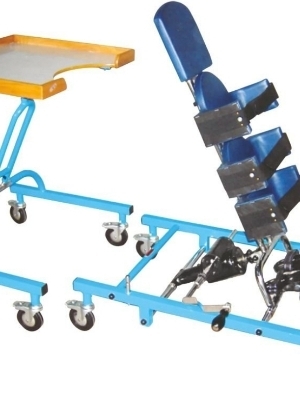

Price:
- 50
- 100
- 200
- 250
- 500
- 1000+
More Products in Physiotherapy Equipment Category
Door Latch Board
Price 4000 INR / Piece
Minimum Order Quantity : 1 Piece
Usage : Usage and Benefits Skill Development: It is designed to enhance fine motor skills, problemsolving abilities, dexterity, and handeye coordination. Learning Opportunity: The board provides a learning opportunity by using common household hardware of different designs to familiarize users with everyday tasks. Therapeutic Use: It is a valuable tool in therapy sessions to promote cognitive growth, language development, and sensory experiences.
Power Source : Other
Display : Other
Material : It is typically made from the following materials: Board/Frame: The main board and frame are often made of wood or a laminated board. Latches/Hardware: The various latches, hinges, and other hardware components are generally made of metal, such as stainless steel. Knobs: The round knobs appear to be made of materials like wood or plastic
Triple Training Staircase hand rails
Price 25000 INR / Piece
Minimum Order Quantity : 1 Piece
Usage : The product shown in the image is a medical rehabilitation staircase, also known as a training ladder or a threeway training stair. Its primary usage is in physical therapy and rehabilitation centers to help patients regain their ability to walk and climb stairs. The equipment is used for: Gait Training: Assisting patients in improving their walking and standing abilities. Stair Climbing Practice: Helping patients recover the capability of safely going up and down staircases. Physical Therapy: Serving as a tool for physical therapists to help patients heal from injuries or conditions that affect mobility.
Power Source : Manual
Display : NIL
Material : Wood and steel
Metallic Exercise Corner Stair Case with Ramp
Price 22000 INR / Piece
Minimum Order Quantity : 1 Piece
Usage : The product shown is a rehabilitation staircase with a ramp, also known as an exercise staircase. It is used primarily for physical therapy and mobility training.UsageRehabilitation: The staircase and ramp are used by physical therapists to help patients recover from injuries or surgeries by practicing stair climbing and walking on an incline. Mobility Training: The equipment is designed to improve a person's coordination, balance, and muscle strength. Safety Features: It is typically equipped with nonslip surfaces on the steps and ramp, as well as handrails at different heights to ensure safety and stability for both adults and children during exercises. SpaceSaving Design: Some models are built in a corner or Lshape to save space in a clinic or hospital.
Power Source : Manual
Display : NIL
Material : The physiotherapy exercise staircase shown in the image is typically made from a combination of materials, including steel, iron, plywood, and PVC.Frame and Supports: The supporting frame and uprights are often constructed from tubular steel or iron. Steps and Ramp: The steps and ramp are commonly made of plywood or a commercial board, often with a nonslip mat or surface covering. Handrails: The handrails are frequently made of PVCsheathed iron tubing.
Shoulder Wheel
Price 6500 INR / Piece
Minimum Order Quantity : 1 Piece
Usage : The product shown in the image is a Shoulder Wheel, a piece of equipment used for physical therapy and rehabilitation.Its usage and benefits include:Improving range of motion: It is used to increase flexibility and the range of motion in the shoulder joint. Strengthening muscles: The device allows for resistance exercises to help strengthen the muscles of the shoulder and arm. Pain and stiffness relief: It is used to help relieve pain, muscle spasms, and stiffness in the shoulder. Postinjury recovery: The shoulder wheel is a common tool for rehabilitation after shoulder injuries, surgeries, or conditions like frozen shoulder.
Power Source : Manual
Display : NIL
Material : Based on the visible components, the shoulder wheel in the image is made of wood, metal, and what appears to be a plastic or composite material for the wheel itself. Similar products are often constructed from materials such as iron, mild steel, stainless steel, and various plastics. Wheel: The large white wheel is likely made from a composite or plastic material.Mounting: The wallmounted frame consists of wooden boards.Hardware: The brackets, resistance mechanism, and other fittings are made of metal, such as stainless steel or iron.
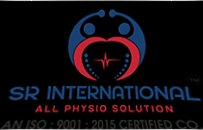

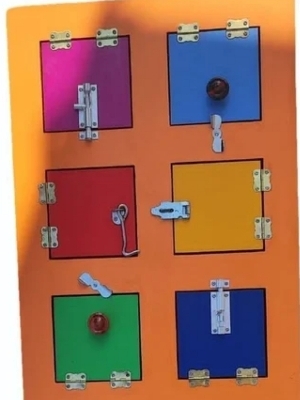
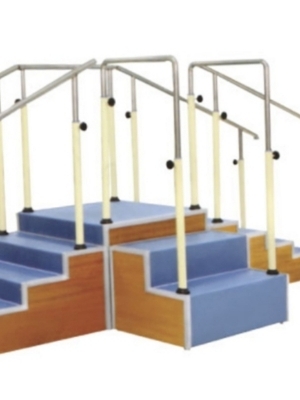
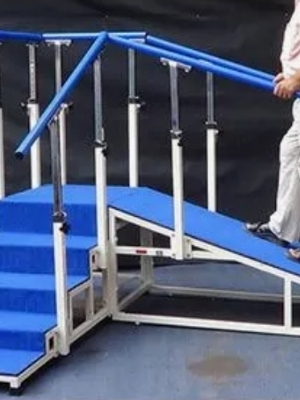
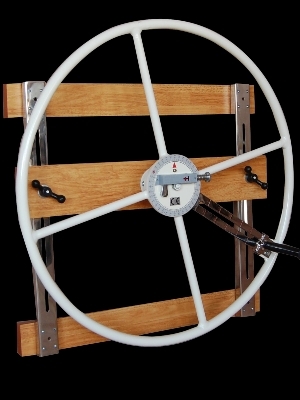


 Send Inquiry
Send Inquiry Send SMS
Send SMS